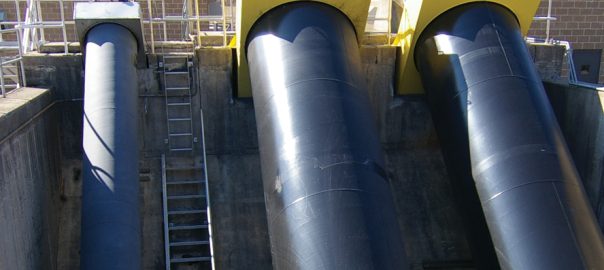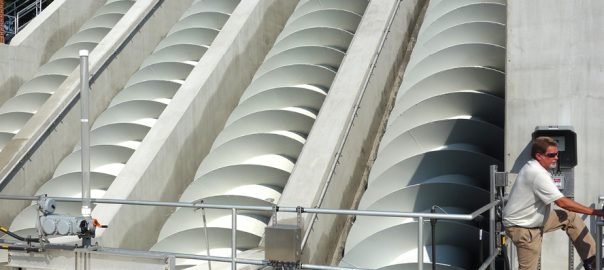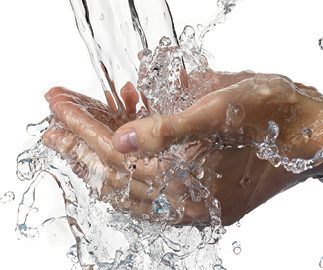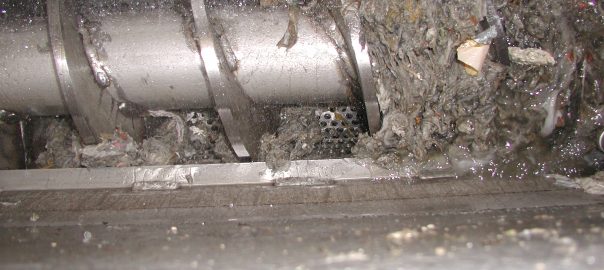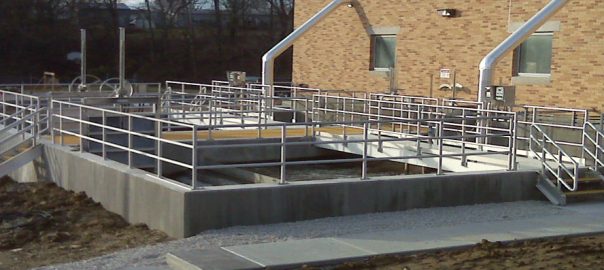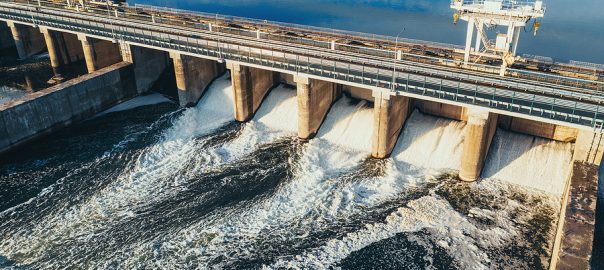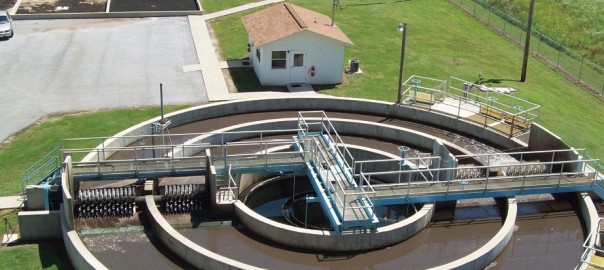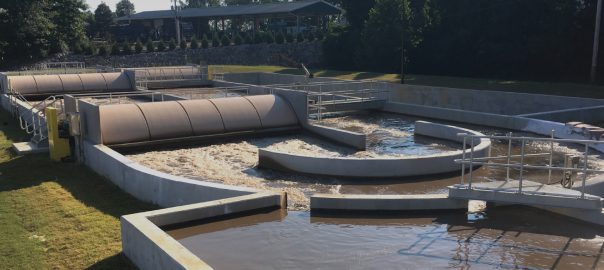
The nation’s wastewater treatment plants treat around 34 billion gallons of wastewater each day. That’s approximately 1.42 billion gallons of water per hour or 23.6 million gallons per minute. Water that flows in from sewers or is trucked in by septage haulers has to be processed to remove inorganic and organic materials and get levels of nitrogen, phosphorus, pathogens, and many other chemicals, metals, and pollutants to safe levels.
While machines do a lot of the work in a water treatment plant, you still have to have people ready to handle unexpected events like machine breakdowns or flooding. Take a look at some of the job duties an operator in a wastewater treatment plant and water treatment facility is tasked with. It often includes:
- Adjusting water pressure and flow rates for repairs, if a water main breaks or a clog occurs.
- Alerting chief operator and maintenance crews to problems with valves, motors, pumps, processing equipment, gauges, meters, and other wastewater equipment.
- Calibrating lab equipment and preparing the chemical mixtures needed for testing.
- Collecting wastewater samples and running tests on the water quality to ensure the treated water meets permitted limits.
- Inspecting equipment and facilities for problems.
- Keeping floors and buildings free of obstacles and clutter that decrease safety.
- Logging water quality and readings from the equipment.
- Managing hydrant flushing to prevent mineral and sediment build-up in lines.
A lot of this could be automated with the use of AI. Humans make mistakes. No one is perfect, even after training and certification. But, you can improve your wastewater treatment plant’s efficiency and output using artificial intelligence. Take a closer look at the facts and benefits that are gained when using AI in your wastewater treatment plant.
Understanding the Role of Artificial Intelligence in Wastewater Treatment
Artificial intelligence uses computer science and datasets to perform tasks that require a human’s intelligent approach to thinking, evaluating, and problem-solving. AI will use skill sets like speech recognition, analytical skills, decision-making, and visual perception to contemplate and complete tasks. It’s extremely useful in wastewater treatment where precision, timing, and accuracy are essential.
It all stems from a paper written back in the 1950s in which Alan Turing pondered a simple question about whether or not machines were capable of thought. It led to the Turing Test where an interrogator had to decide if a response was generated by a computer or given by a human. This kicked off the advancements AI has seen since then.
Whether wastewater is trucked into a septage pumping station or comes in from the sewer system, the treatment stages are the same, though the requirements for treatment may vary from one location to the next. When a wastewater treatment plant gets a water discharge permit from the EPA, the effluent guidelines are listed in the permit.
Plants must work to meet or exceed those guidelines by properly completing each stage of wastewater treatment. If you look at the stages of wastewater treatment, it becomes clear where AI can help out.
-
Screening and Pumping
As wastewater enters a treatment plant, it must be screened to remove items like plastics, “flushable” wipes, toys, and other items that will not break down easily. Those items are washed and pressed to remove as much wastewater as possible and then moved to a landfill.
AI can be helpful in this stage by helping to monitor for jams at a septage pump station. AI can closely track the amount of septage a truck is dropping off and the flow rates coming in from sewers and use the real-time information to speed up or slow down pumps to help lower energy costs and prevent costly overflows.
While many cities have shifted away from combined sewer and stormwater systems, there still are cities that have these combined systems. In moments of heavy rain or when the snow melts faster than expected, the influx of stormwater can increase demand for a wastewater treatment plant. It’s not uncommon for plant operators to have to release untreated or partially treated wastewater to the lake or river to prevent flooding. That emergency release can be costly, but AI can help lower the risk of that happening.
-
Grit Removal
Once wastewater has been screened and raked, grit removal is the next stage. Gritty particles like sand, gravel, coffee grounds, and bone fragments are all damaging to equipment. Instead, grit is allowed to settle and then it’s pumped out and removed to landfills.
The reason grit needs to be removed is that it wears out equipment faster. If you get grit building up in a pump or motor, the continual rubbing and abrasion degrade the components, increasing the need for repairs. One thing AI offers that is important is predictive maintenance. AI can track the usage of different machines and predict when components are starting to wear out.
Your team can make repairs before the equipment fails. This prevents unexpected downtime, which is essential in wastewater treatment.
-
Primary Settling
While grit removal is technically a settling process, primary settling is the first big move to remove materials from the wastewater. The water enters the clarifiers (large, circular tanks) and sludge (food, toilet paper pulp, and human waste) sinks to the bottom where pumps remove it. Fats, oils, and grease float to the top and form a scum layer that can be skimmed out and removed. The removed sludge and FOGs go to digesters for further processing during activated sludge.
Chemicals may be added at this stage to start removing phosphorus. AI can help with the dispensing of any chemical additives to ensure that the right amounts are used and avoid lost money through excessive use of these chemicals. Even a splash more than is necessary can drive up costs each month.
-
Aeration and Activated Sludge
The sludge and FOG are introduced to microorganisms that break them down into nitrogen, water, and cell tissue. Treated wastewater goes on to secondary settling.
-
Secondary Settling
Secondary settling involves more clarifiers. This time, aeration helps further separate the activated sludge, which is pumped from the bottom of these circular tanks and returned to the activated sludge process. The clarified wastewater is now almost entirely free of materials. It’s moved to the filtration process.
-
Filtration
Filtration is one of the final steps before water is released to streams, lakes, rivers, or a water treatment plant for reuse. The water is pumped from secondary settling tanks to large filters that capture tiny particles. From time to time, the filters are backwashed, and that water goes to the start of the wastewater treatment stages to prevent any loss of water.
-
Disinfection
Some plants use products like chlorine to kill remaining bacteria. Others rely on chemical-free UV disinfection. Ultraviolet lighting like the sun’s UV rays kills remaining bacteria. If chlorine is used, it must dissipate to acceptable levels before it’s released to bodies of water where it could harm aquatic plants and animals.
-
Oxygenation
Before the water can be released, it has to be properly oxygenated. AI is helpful in the real-time tracking of oxygen levels to ensure the water that’s released is exactly where it needs to be. AI can add oxygen or turn up bubblers to release oxygen if the content is too high.
SCADA systems are often used by wastewater treatment plants today, and SCADA systems have been beneficial in predicting problems and alerting plant operators to take corrective actions. With the use of AI, so much more is possible.
AI Saves Money
A German wastewater treatment plant incorporated AI sensors and found their energy usage declined by 30%. Artificial intelligence saves money and helps prevent costly errors. Talk to Lakeside Equipment about the possibility of adding AI to your existing computerized controls and the equipment upgrades that help bring your plant to a point where AI is easily incorporated.

